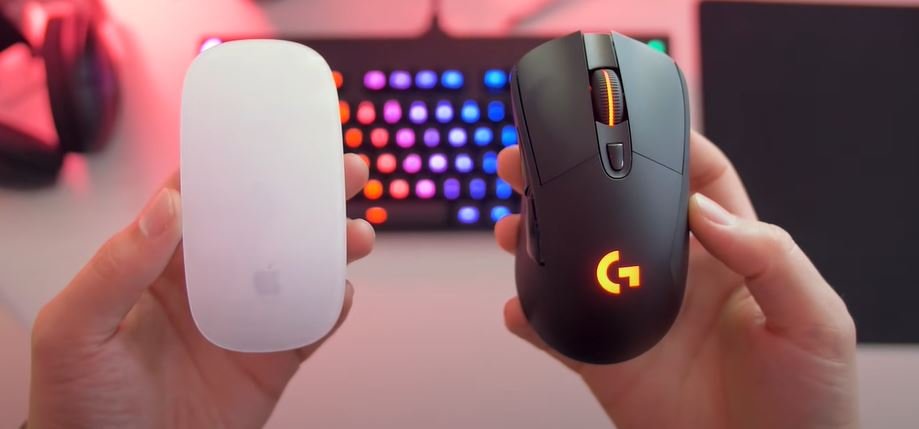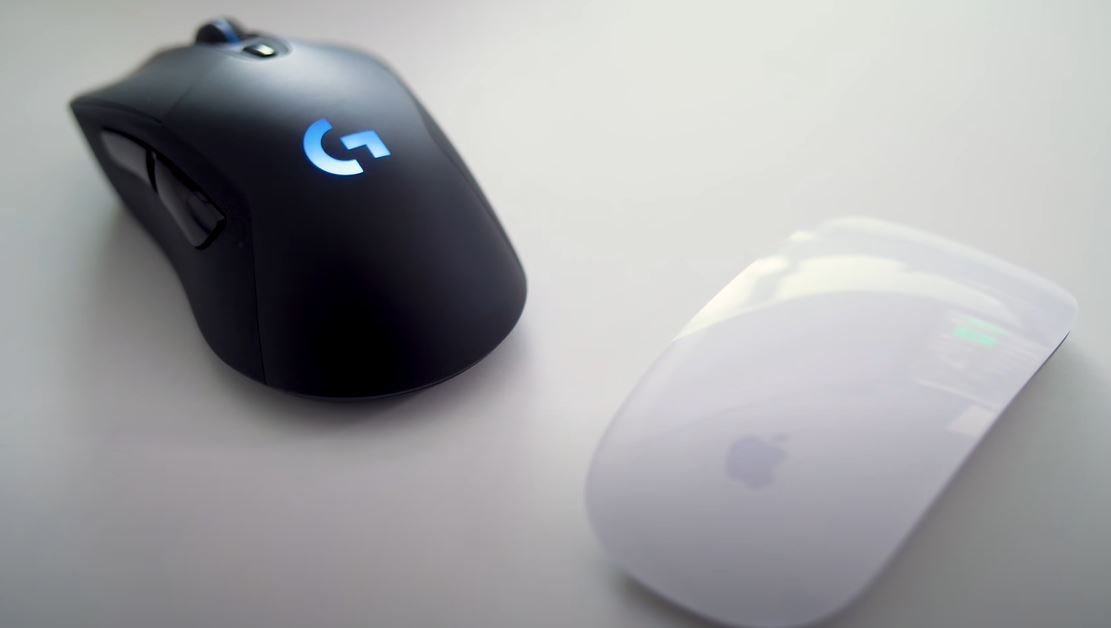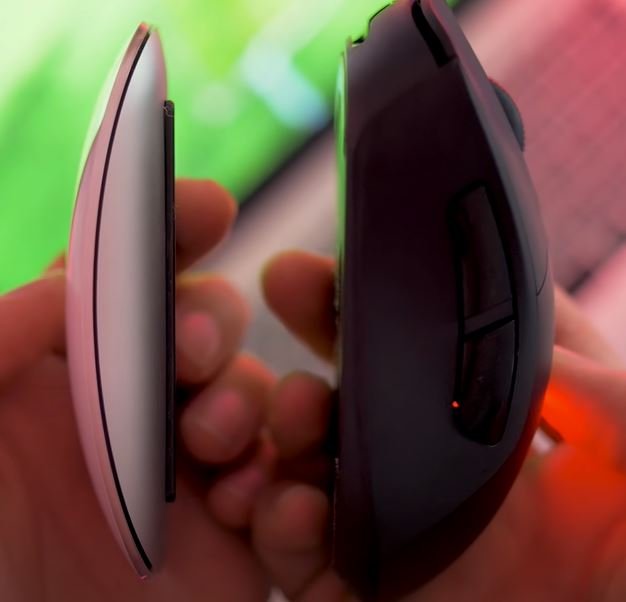In the realm of computer peripherals, few brands have captured the essence of sleek design and seamless integration like Apple. One such product that epitomizes this ethos is the Apple Magic Mouse 2. But is it truly the ultimate choice for Mac users, or could a gaming mouse offer a superior experience? In this article, we delve deep into the comparison between the Apple Magic Mouse 2 and the G43 gaming mouse to determine which reigns supreme for MacBook users.
Unboxing the Apple Magic Mouse 2: Aesthetic Marvel or Ergonomic Quandary?
Upon unboxing the Apple Magic Mouse 2, one cannot help but marvel at its sleek design. The combination of glass and aluminum exudes sophistication, making it a visually enticing addition to any Apple enthusiast’s collection. However, the ergonomic aspect raises eyebrows. While the aesthetics are undeniably pleasing, the comfort factor leaves much to be desired, especially when compared to more ergonomically designed alternatives like the G43 gaming mouse.

Connectivity and Battery Life: Wireless Convenience vs. Functional Practicality
One of the key selling points of the Apple Magic Mouse 2 is its wireless connectivity, eliminating the need for cumbersome USB dongles. Pairing with an Apple computer is seamless, with recognition almost instantaneous. Moreover, the month-long battery life on a single charge ensures uninterrupted usage, albeit with the caveat of a peculiar charging port placement.

Contrastingly, the G43 gaming mouse requires a USB dongle for connectivity, potentially occupying a valuable USB port. While the battery life may not match the Magic Mouse, it compensates with functional Mac OS drivers and a microUSB charging port. Despite differing in connectivity and battery life, both devices cater to distinct user preferences, offering a blend of convenience and practicality.
Ergonomics and User Experience: Form Factor vs. Functionality
The divergence in ergonomics between the Apple Magic Mouse 2 and the G43 gaming mouse is stark. The former’s symmetrical design caters to both left and right-handed users but lacks the ergonomic finesse of the latter. While the Magic Mouse boasts touch gestures and a uniform surface, the G43 prioritizes comfort with its ergonomic curves and tactile buttons.
However, the Magic Mouse’s unique touch gestures and smooth scrolling capabilities on its glass surface provide a distinct user experience. Despite initial reservations, users may find themselves adapting to its unconventional design over time. Conversely, the G43 offers responsive sensor technology and ergonomic superiority, particularly for prolonged usage scenarios.

Performance: Tracking Precision and Responsiveness
When it comes to tracking precision and responsiveness, both mice offer distinct advantages. The Magic Mouse’s laser sensor excels on various surfaces, including reflective ones, providing reliable tracking accuracy. In contrast, the G43’s optical sensor offers unparalleled precision but requires a dedicated mat for optimal performance.
In practical usage scenarios, the G43’s responsiveness shines through, especially in gaming environments where precise aiming is crucial. While the Magic Mouse may suffice for casual use and productivity tasks, it pales in comparison to the G43’s performance-oriented design.
Comparison Table: Apple Magic Mouse 2 vs. G43 Gaming Mouse
| Feature | Apple Magic Mouse 2 | G43 Gaming Mouse |
|---|---|---|
| Connectivity | Fully wireless, no USB dongles required | Requires USB dongle for connectivity |
| Battery Life | Lasts up to a month on a single charge | Varied battery life, may require more frequent charging |
| Ergonomics | Symmetrical design, touch gestures on glass surface | Ergonomic curves, tactile buttons for enhanced comfort |
| Performance | Laser sensor for reliable tracking on various surfaces | Optical sensor for precise tracking, may require dedicated mat |
| Compatibility | Seamless integration within Apple ecosystem | Compatible with Mac OS, additional drivers may be needed |
| Price | Typically priced around $79 | Varied pricing, depending on model and features |
Conclusion: Choosing the Right Mouse for Your MacBook Experience
In the perennial debate between form and function, the choice between the Apple Magic Mouse 2 and the G43 gaming mouse ultimately boils down to individual preferences and usage patterns. For users prioritizing aesthetics and seamless integration within the Apple ecosystem, the Magic Mouse offers a visually stunning option with adequate functionality.
Conversely, those seeking ergonomic comfort and performance optimization may find solace in the G43 gaming mouse. Its responsive sensor technology and ergonomic design cater to users’ specific needs, particularly in gaming and productivity-oriented tasks.
In essence, the ideal mouse for your MacBook experience hinges on striking the delicate balance between form, functionality, and personal preference.
Frequently Asked Questions (FAQs)
- Which mouse is better for MacBook, the Apple Magic Mouse 2 or the G43 gaming mouse?
- The answer depends on individual preferences and usage patterns. The Apple Magic Mouse 2 offers seamless integration within the Apple ecosystem and aesthetic appeal, while the G43 gaming mouse prioritizes ergonomic comfort and performance optimization.
- Does the Apple Magic Mouse 2 have touch gestures?
- Yes, the Apple Magic Mouse 2 features touch gestures on its glass surface, allowing users to perform actions such as smooth scrolling and swiping.
- Can the G43 gaming mouse be used for gaming on a MacBook?
- Yes, the G43 gaming mouse is suitable for gaming on a MacBook, offering responsive sensor technology and ergonomic design for enhanced gaming experiences.
- Which mouse has better battery life, the Apple Magic Mouse 2 or the G43 gaming mouse?
- The Apple Magic Mouse 2 boasts a month-long battery life on a single charge, whereas the G43 gaming mouse may require more frequent charging depending on usage patterns.
- Do both mice support Mac OS?
- Yes, both the Apple Magic Mouse 2 and the G43 gaming mouse support Mac OS, although the latter may require additional drivers for full functionality.
